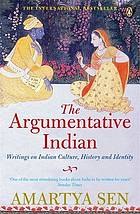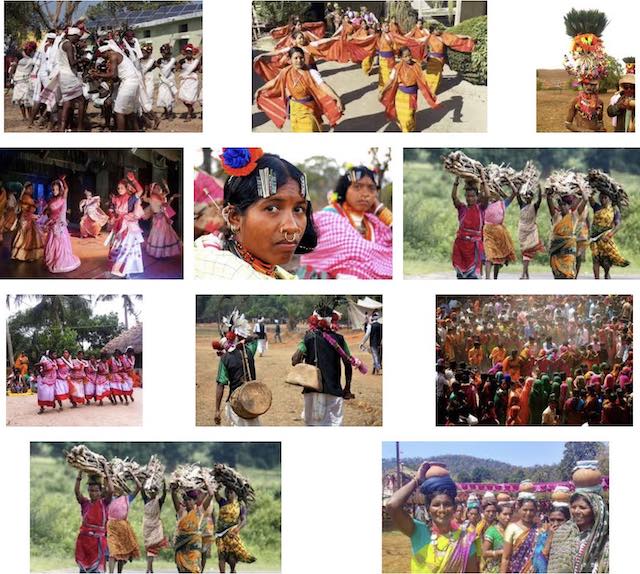
In Gudalur, a plantation landscape in South India, about 150 elephants share space with a quarter of a million people. Using a quantified survey coupled with ethnographic fieldwork, we aim to better understand human diversity and tolerance of elephants that allows for coexistence. We find a marked difference between communities, with ethnicity being a better predictor of tolerance than the more tangible socio-economic or geographic variables such as income, education, land holding or cropping patterns. […]
Discussions around coexistence are relatively recent, described as “a sustainable though dynamic state, where humans and wildlife co-adapt to sharing landscapes and human interactions with wildlife are effectively governed to ensure wildlife populations persist in socially legitimate ways that ensure tolerable risk levels. […]
Ontology–What Is an Elephant
First, concerning the characterization of elephants, or the varied elephant ontologies – how are they conceived and their interactions with people explained? There appear to be four broad conceptualizations that emerge, where people understand elephants as (1) Other-than-human persons, (2) Gods, (3) Victims, and (4) Wild/unpredictable animals, which we briefly describe below.First is the indigenous idea of other-than-human persons, where some individual elephants are accorded some form of person-hood, capable of mutual respect, communication and even relationships with humans, that was prevalent among the Kattunayakans, Bettakurumbas and to a lesser extent the Paniyas. This conceptualization of elephants allows for accepting varying behavior in elephants based on individuality, personality and agency. Elephants are expected to behave in accordance with human values and morality, and elephants that have been wronged are expected to be angry or sad and behave unpredictably (where even killing of a person is not seen as unusual), but aberrant individuals who behave badly with no (perceived) provocation are liable for punishment. This understanding of elephants is perhaps the most conducive to sharing of space for a more peaceful coexistence.
Second is the idea of elephants as Ganesha or Ganapati, one of the best known and most worshiped deities of the Hindu pantheon, which is prevalent among all the communities except the hunter-gatherers, Christian or Muslim Malayalis, and Forest Department/Wildlife NGOs. Attributing divine status to elephants almost automatically implies certain reverence and tolerance. Negative encounters between people and elephants are rationalized in terms of divine retribution, and there is a certain acceptance of that moral ecology. […]
Source: “Coexistence and Culture: Understanding Human Diversity and Tolerance in Human-Elephant Interactions” by Tarsh Theakakara, Shonil A. Bhagwat and Thomas F. Thornton
URL: https://www.frontiersin.org/articles/10.3389/fcosc.2021.735929/full
Date Visited: 30 March 2023
Ramesh is bettakurumba, but not a traditional forest dwelling adivasi by any stretch of imagination. His mother is a health worker, and goes to office every day. He grew up in Gudalur town, likes to wear jeans and aspires to bat like Virendra Sehwag. He’s been to school all his life, and is in his 12th standard now. He’s been helping with the GPS mapping of the villages and sends me text message updates every now and then.
So how is he different from his average non tribal classmate? I assumed there was no difference. He himself does not think there’s much difference. But a recent event made me sit up and think. Despite all the modernities it appeared there is still something adivasi in him. […]
Soon after the hospital opened a tusker decided to visit.
It came almost up to the entrance, and sniffed around the ambulance. There was a lot of confusion and worry all around. This was a part of Gudalur town, and no one expected an elephant to stray so far away from Mudumalai. There were lots of kids living at the quarters, who were used to playing outside till late evening. […]
On the third day Ramesh told me he cut all their sugarcane from the patch behind their house and had taken into the forest and left it for the elephant! I thought he was joking. The sugarcane would have paid all their fees for a month, or given all the kids at the quarters many days of happy munching.
Why did you do that?!
‘Better I take it and let it eat there in the forest, otherwise it will come here. Anyway poor thing will also be hungry anna. Its been there three days, and does not have much to eat in that small forest. If it goes into the estate they will all shout and make lots of noise – burst crackers and beat drums – and it will get scared and angry. It also needs to eat no. It came here by mistake I think, and now it is stuck. It can’t go back into the estate and back to the forest and can’t even come this side towards town.’
This was more or less the atitude of all the ‘educated’ and ‘modern’ adivasis living in the quarters – the elephant should not be here, but now that it was it had rights. It had to eat, and so it was quite alright if the banana plants around the houses and other tasty elephant food went. Kids were not allowed to be out after 6, and were told not to make any loud noises after dark. The nurses changed the night shift from 8.00 to 6.00 so they could get inside before dark. Patients were all cautioned about going out in the night, and word was spread around to be careful if you had to come that side at night.
There were no attempts by anyone to chase it off, put on more lights outside make noise and keep fire crackers at hand or any of the other regular tactics used to keep elephants at bay. The elephant had come, and if you peacefully waited for a few days it would find its way back into the forest.
Things ended finally with the forest department bringing kumki elephants from the camp to chase this one through the estate back into the forest.
It was heartening to see that some adivasi values had stayed even as lifestyles changed.
Source: Human Elephant (no) Conflict « In the shade of a forest tree by Tarsh Thekaekara tarshthek.wordpress.com, July 4, 2009
Address : http://tarshthek.wordpress.com/2009/07/04/human-elephant-no-conflict/
Date Visited: Sun Feb 03 2013 11:47:41 GMT+0100 (CET)
Today’s children will shape the future path of our planet, but our current ‘education system’ is doing a good job of putting blinkers on children, focusing only on passing exams and training them to not think. The entire focus is on getting a ‘good’ job, and making a lot of money. To consume more and more and ‘develop’ to western standards, and to lead (arguably) unhappy lives.
Everyone loves to see tigers and elephants, but no one makes the connection between the animals, the forests they live in, the wider landscapes and ecosystems and human well being. And that over consumption and expanding human populations are taking over the entire planet.It is rather paradoxical that India is home to more than half the worlds wild Asian elephants and tigers, and also more than one-fifth the world’s human beings. Even with a population density of more than 350 people per square km (and rising), we have been able to allow for a wide range of animals to share space with us. This is largely because of a long history of cultural tolerance to animals and nature, which is sadly being rapidly lost as more people get ‘educated’ and India ‘develops’.
Source: Education and Awareness, The Shola Trust
URL: http://www.thesholatrust.org/education/
Date Visited: 29 March 2023

“The smart boy or clever girl who is deprived of the opportunity of schooling, or who goes to a school with dismal facilities (not to mention the high incidence of absentee teachers), not only loses the opportunities he or she could have had, but also adds to the massive waste of talent that is a characteristic of the life of our country.” – Nobel Awardee Amartya Sen in The Argumentative Indian (Penguin Books, 2005), p. 344
Tips: Tribal Children’s Right to Education | Find this and other books published in India | Video documentary on the Lifeworld of an Enlightened Villager | Related posts about Childhood | Childrens rights: UNICEF India | Safe search >>
[Bold typeface added above for emphasis]
Learn more from Mari Thekaekara >>
Up-to-date reports by Indian experts and journalists
Search tips
Combine the name of any particular state, language or region with that of any tribal (Adivasi) community.
Add keywords of special interest (music, poetry, dance just as health, sacred grove and biodiversity); learn about the rights of Scheduled Tribes such as the “Forest Rights Act” (FRA); and the United Nations “Declaration on the Rights of Indigenous Peoples”, “Universal Declaration of Human Rights”, “women’s rights”, or “children’s right to education”.
Ask a question that includes “tribal” or “Adivasi”, for instance: “Adivasi way of life better?” (or “tribal way of life worse?”)
Specify any particular issue or news item (biodiversity, bonded labour and human trafficking, climate change, ecology, economic development, ethnobotany, ethnomedicine, global warming, hunter-gatherers in a particular region or state, prevention of rural poverty, water access).
For official figures include “scheduled tribe ST” along with a union state or region: e.g. “Chhattisgarh ST community”, “Himalayan tribe”, “Scheduled tribe Tamil Nadu census”, “ST Kerala census”, “Particularly Vulnerable Tribal Group Jharkhand”, “PVTG Rajasthan”, “Adivasi ST Kerala”, “Adibasi ST West Bengal” etc.
In case the Google Custom Search window is not displayed here try the following: (1) toggle between “Reader” and regular viewing; (2) in your browser’s Security settings select “Enable JavaScript” | More tips >>
Note: hyperlinks and quotes are meant for fact-checking and information purposes only | Disclaimer >>
List of websites covered by this Google custom search engine
Academia.edu (platform for academics to share research papers) – www.academia.edu
Archive.org – https://archive.org
Centre for Science and Environment – https://www.cseindia.org
Current Conservation – https://www.currentconservation.org
Development and Cooperation (D+C) https://www.dandc.eu
Down To Earth (India) – www.downtoearth.org.in
India Environment Portal – www.indiaenvironmentportal.org.in
Harnessing Nature Magazine – https://harnessingnature.online
Mongabay-India – https://india.mongabay.com
M S Swaminathan Research Foundation – www.mssrf.org
Navdanya (protecting India’s biodiversity based food heritage) – https://navdanya.org
Third World Network (Penang, Malaysia) – https://twn.my
The Shola Trust (nature conservation in the Nilgiri region) – www.thesholatrust.org

Indian online periodicals and platforms | Images view >>
~ ~ ~
Personalize your CustomSearch by combining other search words >>
(e.g. name of a tribal community and region, a craft, or dance and puppetry)
Research the above issues with the help of Shodhganga: A reservoir of theses from universities all over India, made available under Open Access >>
Note: hyperlinks and quotes are meant for fact-checking and information purposes only | Disclaimer >>